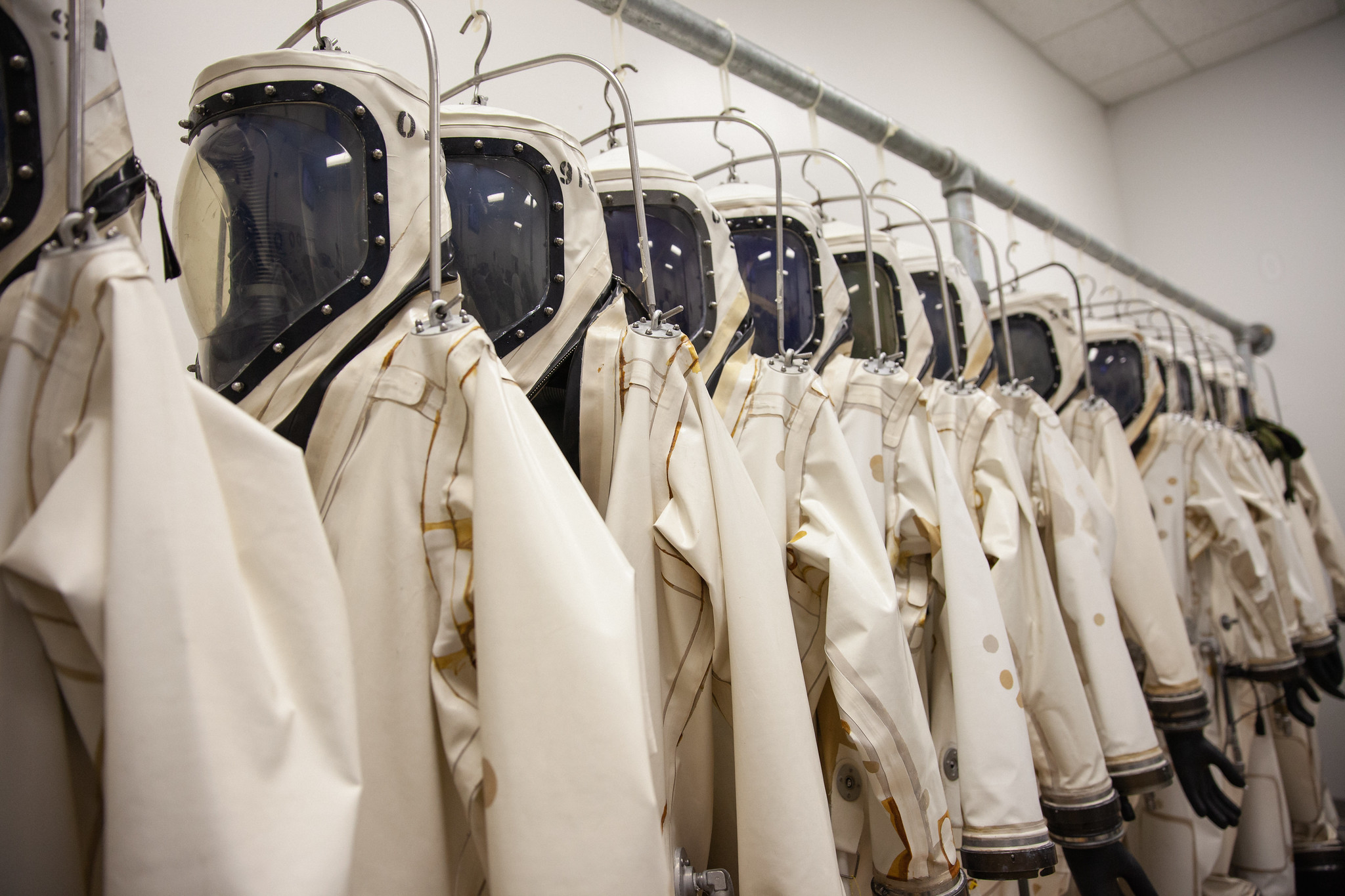
SCAPE Suits
Cryogenic Supply System May Improve Mine Rescue Operations
The National Institute for Occupational Safety and Health (NIOSH), BSC Life Support, LLC, and NASA’s Biomedical Lab are partnering under a Space Act Agreement for the development of cryogenic life support systems that can be used in mine rescue. The device, called a Cryogenic Refuge Alternative Supply System (CryoRASS), and a smaller liquid air-filled backpack, called Cryo BA, have the potential to store more than twice the amount of breathable air than traditional compressed gas systems.
NIOSH is funding the project in hopes that the liquid air-based system could change the way coal miners seek refuge or flee from underground disasters. CryoRASS works by drawing air into a closed environment, then vaporizing and circulating it back to the user. Cryo BA works by vaporizing liquid air using ambient heat and delivering it to the user via a Self-Contained Breathing Apparatus (SCBA) mask. NASA has used cryogenic life support technology for worker protection suits, astronaut cooling and ventilation devices, and crew rescue SCBA since the Mercury program in the 1960s.
Mining refuge chambers are designed to provide 96 hours of breathable air, but the CryoRASS could “easily exceed the minimum requirements, allowing more time for the miners to be rescued,” said KSC lead engineer David Bush. The team is also building liquid air storage and refill stations for the mines that will be spaced out about 90 minutes apart so crews could walk out of a disaster situation with the personal CryoBA backpacks.
Bush and his team continue to advance and refine the cryogenic technology and are gaining some attention from NASA’s newest human spaceflight programs. The team is also reviewing with NASA the different options for commercializing the technologies. BCS Life Support will lead the commercialization and marketing efforts for the technologies once they are fully developed and tested, and will target the mining and aerospace industries initially.
“We are excited to be partnering with NASA on this potentially life-saving technology,” said Ed Blalock, BSC President, adding, “It would have been difficult to develop these innovations alone, without the support of NASA and NIOSH.”